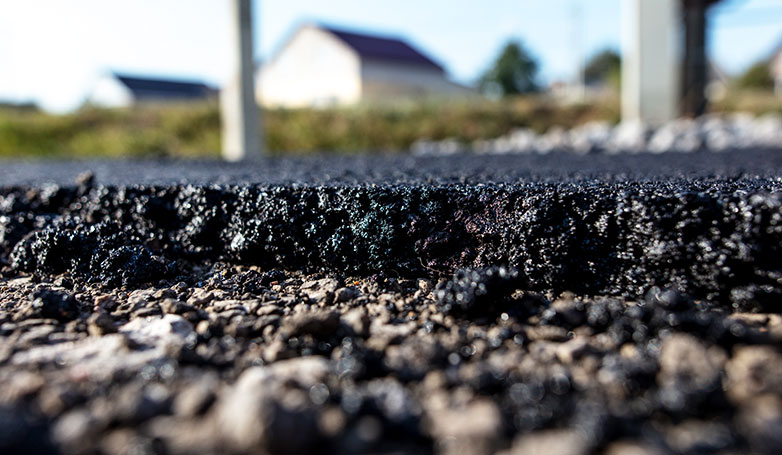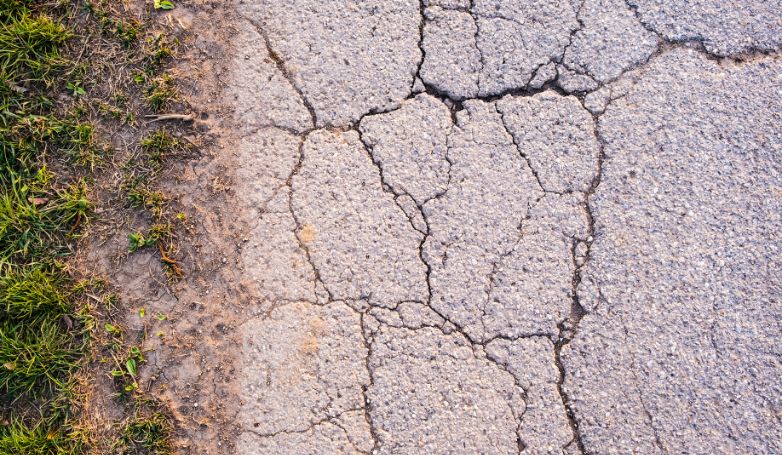How Long Does an Asphalt Road Last? Unveiling the Lifespan
Curious about the durability of asphalt roads? Discover the average lifespan and factors influencing the longevity of these essential surfaces in our comprehensive guide.
Asphalt roads are engineered for endurance, generally lasting 20 to 30 years. However, their lifespan can significantly vary based on maintenance quality, traffic volume, climate conditions, and underlying soil characteristics. Poor drainage in the soil, for example, can substantially reduce an asphalt road’s durability. Understanding these factors is key to maximizing the life of asphalt pavements.
Next, we delve deeper into what affects asphalt road longevity, offering insights on maintenance strategies and tips to prolong the life of your asphalt surfaces.
The Factors That Can Affect the Life of an Asphalt Road

Many factors play a role in how long an asphalt road will last, including some that we touched on in the intro. Let’s elaborate further in this section.
What’s Underneath
Many asphalt roads start from grassy surfaces. Not all soil is necessarily suitable to build atop of. Soils that are considered weaker include loose saturated sand, peat, silt, and clay.
As we’re certain you know if you’ve taken a barefoot walk on the beach, sand shifts under pressure. Enough particles of sand are sturdy enough that your foot doesn’t sink right into it, but the lack of structural soundness makes sand a poor base for an asphalt road.
Peat, silt, and clay are all soil deposits. They share another thing in common: you find these materials most often by bay perimeters and river mouths. These soil deposits often have high quantities of organic content, and building asphalt roads on them makes the road prone to flooding.
Soil Drainage
The underlying soil’s ability to drain water is a critical factor. Poor drainage leads to water pooling and seepage beneath the asphalt, compromising the subgrade and base layers. This water retention can cause swelling, heaving, and eventual cracking of the asphalt surface.
Properly engineered drainage systems, including grading and sub-surface drainage solutions, are vital to prevent such issues and ensure the asphalt’s structural integrity over time.
Paving Thickness

The depth of the asphalt layer significantly affects its durability. Thinner layers are more susceptible to wear and tear, particularly under heavy traffic. Conversely, thicker asphalt provides better resistance to rutting, cracking, and other forms of distress.
The appropriate thickness varies based on expected traffic loads and environmental conditions. For high-traffic areas, increasing the pavement thickness during initial construction can be a cost-effective way to extend the road’s lifespan.
Traffic
The volume and type of traffic greatly influence asphalt road longevity. Heavy vehicles like trucks and buses exert much more stress on the road surface than passenger cars, leading to quicker degradation. Constant heavy traffic can cause rutting, surface fatigue, and eventual structural failure.
Designing roads to accommodate anticipated traffic types and volumes, including reinforcing areas subjected to static loads such as bus stops, is crucial for durability.
Climate
The seasons and the climate in which you live can also influence the condition of the asphalt road. In very hot temperatures, cracks can develop in the asphalt. Water seepage then occurs, which can affect any asphalt sub-surface layers. When this happens, air gaps develop across the asphalt surface.
The next time someone drives over one of these roads, the asphalt’s top layer can crumble, collapse, or sag. The result is a pothole, which is dangerous to drive on and a sign of an asphalt road that’s badly cared for.
It’s not only heat that can affect asphalt, by the way, but cold as well. If you often experience bone-chilling winters where the temperature is well under freezing, the asphalt can freeze in two places: underneath and on top. Cracks are likely to follow, as is water when the temperatures are somewhat less frigid.
If the temps dip back down from there and the water freezes again, it will expand. This strains the asphalt and can also contribute to the formation of potholes.
Lack of Maintenance

Regular maintenance is essential for prolonging asphalt road life. Activities like sealing cracks, patching potholes, and applying sealcoat prevent water infiltration and UV damage.
Neglecting these practices allows minor issues to escalate into major structural problems, drastically shortening the road’s useful life. A proactive maintenance approach, including regular inspections and timely repairs, can significantly extend the road’s serviceability.
Use of de-icing agents
De-icing chemicals, while essential for safety in icy conditions, can be detrimental to asphalt roads. These agents, particularly those containing chlorides, can penetrate asphalt and attack the binder, leading to increased brittleness and cracking.
They can also exacerbate freeze-thaw cycles in the pavement structure. Alternatives like sand or less corrosive agents, along with prompt removal of snow and ice, can mitigate these effects.
Quality of asphalt mix
The composition and quality of the asphalt mix are foundational to road longevity. A mix with the right balance of aggregates, binder, and filler, tailored to the specific climate and traffic conditions, will have higher resistance to rutting, cracking, and weathering.
Using polymer-modified binders, for instance, can enhance flexibility and durability. Poor quality or improperly designed mixes lead to premature failure, necessitating more frequent repairs and resurfacing.
Methods for Extending the Life of an Asphalt Road

As we’ve shown you, lots of things can weaken asphalt roads, but you do have options for making asphalt last longer. Here are some suggestions.
Repair Issues Right Away
Small cracks in the asphalt will inevitably get bigger, and sometimes it doesn’t take as long as you would expect. Thus, as soon as you or someone else spots even a small crack in the road, you’ll want to repair it posthaste. You can use more asphalt to seal the cracks before they go deeper or spread wider.
Apply Sealcoat
A sealcoat product covers the asphalt, adding a second layer atop it that acts as a protectant. Sealcoats can ward off water damage as well as fading from UV rays and even fluids from passing vehicles.
If the asphalt road in question has a rather faded look from years of use and sun exposure, sealcoat restores the appearance of the asphalt. It’ll almost be like paving anew.
Use a Graphene Additive
In 2017, New Atlas, a science and tech news resource, published a piece about graphene. If you’re not familiar with graphene, it’s a carbon allotrope that stacks in layers. Graphene-based asphalt additives are supposed to make asphalt roads more sustainable and durable.
Graphene does have good thermal conductivity, so it could reduce cold-induced cracking as well as asphalt softening from the heat. The article also mentions that these additives can make asphalt stronger and more elastic, even in high-load situations such as heavy, consistent traffic. Some graphene additives may be to add 12 or 14 years more to an asphalt road’s lifespan.
Asphalt Maintenance Tips

To reiterate what we mentioned in an earlier section, maintaining asphalt roads is one of the most recommended ways to increase the road’s lifespan. Here are some asphalt maintenance tips to use in addition to the information above.
Limit Load
Speaking of high-load situations as we did before, it helps if you can reduce these kinds of scenarios as much as possible. If you have heavy vehicles like commercial-grade trucks, construction vehicles, garbage trucks, and the like, you might limit their parking time in your lot or even encourage them to use another road.
Sweep Asphalt Often
Sweeping, especially if you own a commercial parking lot, is one of the most important parts of a good asphalt maintenance routine. When sweeping, you’re removing all obstructions from your asphalt. This gives you a chance to look at your asphalt objectively. You’re removing sand and other aggregate materials that could degrade the asphalt’s quality as well.
Install a Drainage System
Since water can cause both heat-related and cold-related potholes, if your asphalt road doesn’t have a suitable drainage system, that should be high on your priority list too. Drainage system options include under-drains and drain inlets.
FAQs about how long does an asphalt road last

To better understand the longevity and maintenance of asphalt surfaces, let’s delve into some frequently asked questions:
How long will an asphalt overlay last?
An asphalt overlay, which is a new layer of asphalt applied over an existing pavement, typically lasts between 10 to 15 years. The lifespan depends on factors such as the condition of the underlying pavement, the environment, and traffic loads. Proper preparation of the existing surface, including repairing any major cracks or potholes, is crucial for maximizing the overlay’s durability.
How long does 2 inch asphalt last?
A 2-inch asphalt layer is often used for residential driveways or low-traffic areas. Under these conditions, it can last around 15 to 20 years. However, this duration can be shorter in high-traffic or commercial areas. The lifespan is influenced by the quality of the asphalt mix, the thoroughness of the installation process, and the consistency of maintenance practices.
Does asphalt need to be sealed every year?
It is not necessary to seal asphalt every year. Typically, asphalt driveways should be sealed every 2 to 5 years, depending on the climate, the amount of traffic they receive, and the condition of the asphalt. Sealing too frequently can lead to a buildup of layers that might crack or peel. Regular inspections can guide the appropriate frequency for sealing to protect the asphalt from water penetration, UV rays, and chemicals.
Conclusion
The lifespan of asphalt roads, typically ranging from 20 to 30 years, is not entirely predetermined but can be significantly influenced by proactive measures. Establishing a robust preventative maintenance routine plays a pivotal role in extending this lifespan.
Timely addressing issues like cracks and potholes, coupled with consistent cleaning and proper care, can dramatically enhance the durability and functionality of asphalt surfaces. By being vigilant and responsive to the needs of the asphalt, its longevity can be maximized, ensuring it remains a reliable and resilient infrastructure for years to come.


